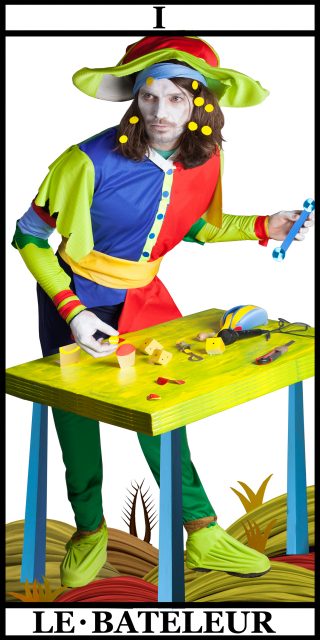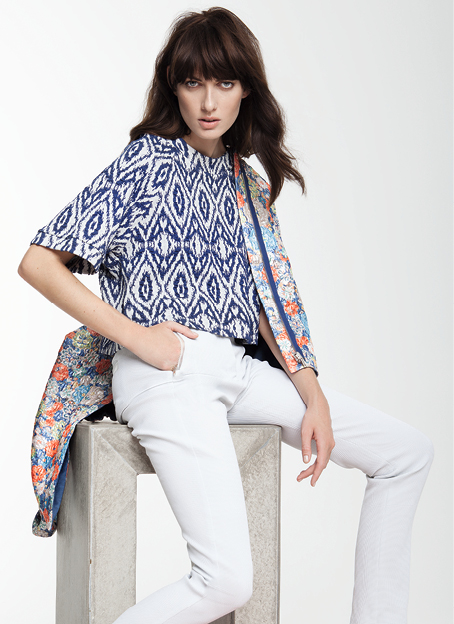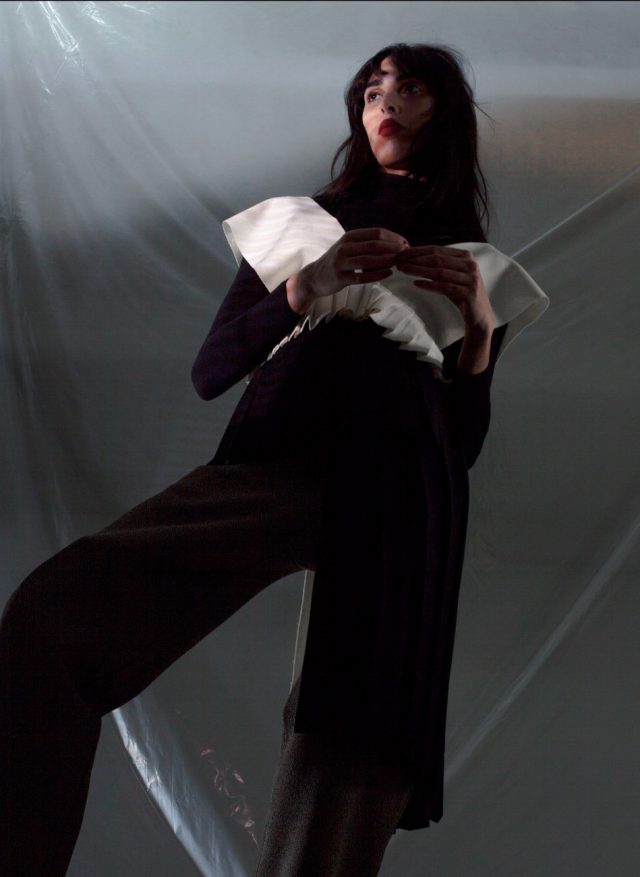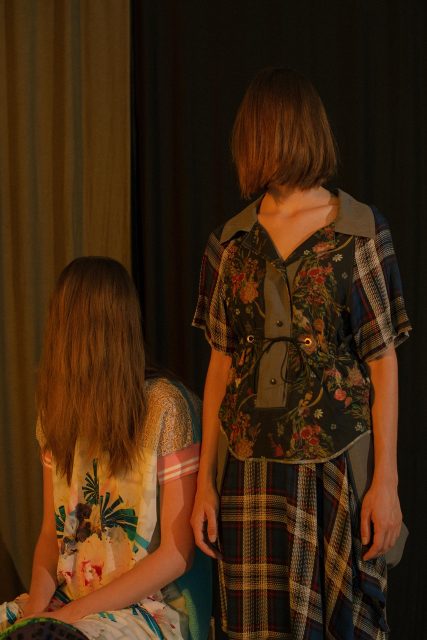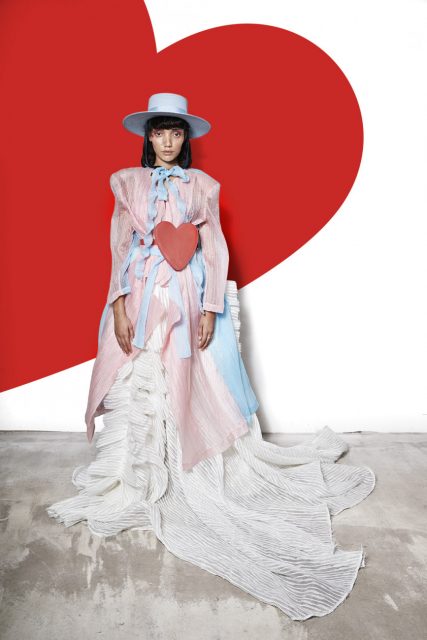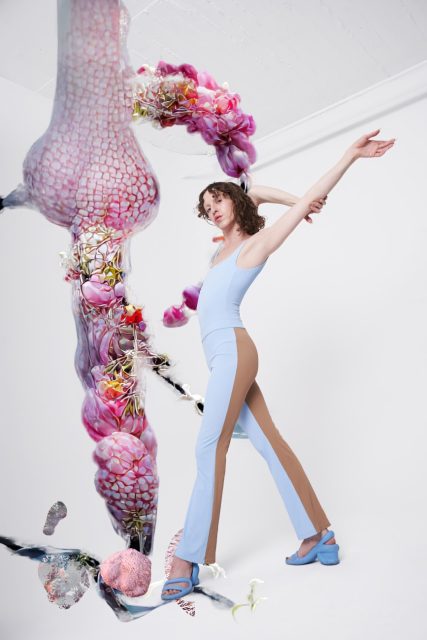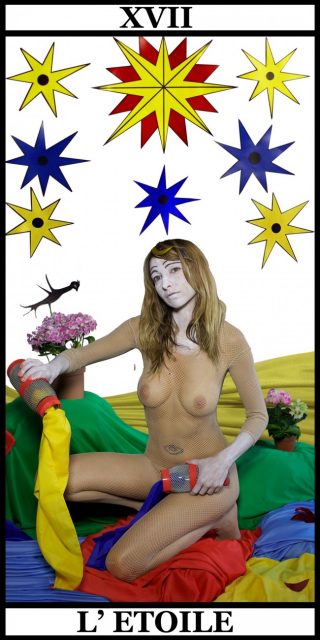
Berlin fashion designer Tata Christiane and performance artist/photographer Viviana Druga are re-staging mythical characters from the Tarot de Marseille—one of the standard patterns of design for tarot cards originating in the 15th century. In their ongoing performance entitled 21 + 1, friends and performance artists were invited to pose as 22 cards from the Great Arcana. Sophisticated draping in each image reimagines the clothing of the original characters and their surrounding landscape. A ritual dimension persists: the models embody the mystic characters in a both tactile and material frequency. In the following interview, both artists discuss their performative approach to fabric, magic animals in fashion, and the distortions of making of a hyper (sur)real world.
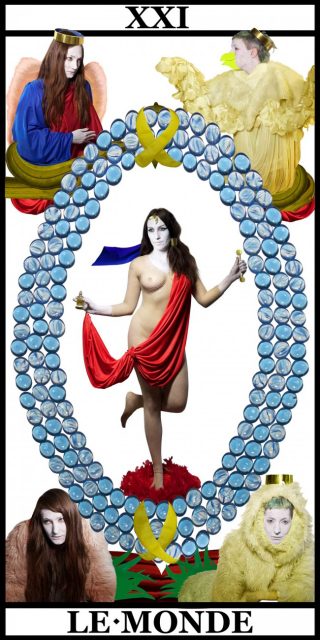
Œ: Which is the connection between the real character and their mythical and symbolic role from the cards? As an incarnation of the symbols, how did they absorb the roles?
Viviana Druga: I did not want to have a 22 models casting that would be shot in a row. The real people interpreting the characters were chosen according to the significance of the motifs depicted on the cards. Sometimes it would take a longer time to find the right person but usually time played an important role as the people I would meet during my quest would prepare themselves for the upcoming cards. I see a transfer between the characters and the real people taking place, a transformation into the mythic character and vice versa. Some of the real characters would bring their own input—their own personalities manifested onto the card, adding contemporary elements. For example, the devil basically created his own representation by adding breasts and horns that he made out of polyester.
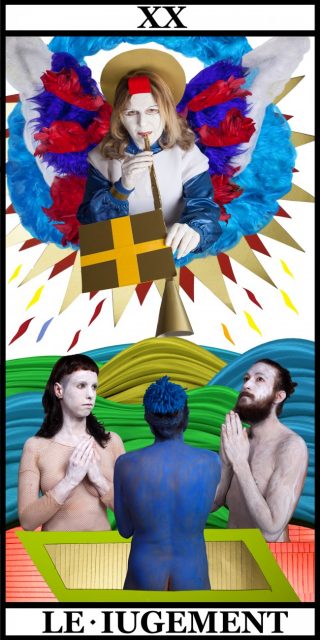
Œ: In which way did these your cards generate an information transfer between character, actor and audience?
Viviana Druga.: Usually the information transfer from mythic character to actor would take place in the performative photo session that took around 3-4 hours. Another transfer happens during the exhibition of the kinetic photo-installation, where the visitor chooses 3 out of 22 images. The kinetic cards flip and reveal the characters. Some are drawn to certain images because there is a visual correspondence with our interior character. Otherwise, a new personal ´you´ is revealing itself in contact with the image. The mythic character created anew with elements form the daily reality and inspired by the canons of the original Marseille is situating himself closer to the contemporary viewer, so the transfer is easily enabled.
Œ: Fabric has the power to take any shape and to take any surface – from a thread to an entire cloth. In 22+1, fabric fills in and replaces other type of materialities and changes the nature of things. How do you work with the power of fabric?
Julie Bourgeois: We work within the limits that the fabric offers. Initially I was thinking of making costumes, but I was soon repelled by the idea of producing something that is not ephemeral. For this project I have chosen to use a polyester fabric with a pretty sporty appearance and with qualities that provided value to me: color intensity, heavy fell of the fabric to make drapes, its ability to not wrinkle. I collected then a few meters of this fabric in different colors that matched perfectly with the colors of the Tarot de Marseille. These fabrics, colored paper, white clay, artificial light and sometimes natural light in the morning, along with not very sharp scissors and various pretty wacky objects we found in Viviana’s studio, were our games’ instruments, our ceremonial tools. I think these limits on materials that we have set have been the key to our freedom and our game. The moment when we recreate the image from the map, with the models. What struck me most in this process, is the act. Our game was sometimes that of witches, representing the result of this magic moment which is the act. The relationships with the models, the construction of the stage/set, the reaction of each model to the card for which he would pose were all part of this process. I also liked that this process was quite long and quite a secret for two years.
Œ: In your cards the real landscape becomes inorganic matter (fabric), the animals are transformed into humans and they pass from the original bi-dimensional illustration into three dimensional characters.
Vivian Druga: Humans playing animals was a decision that worked well as it created new roles for interpretation and self-reflection. La Force is mirrored in the Lion that she is taming and the Chariot is drawn by horses that are another representation of the Chariot master, signifying that he is the incarnate of his own will and direction. Even Julie and I are on the World card, hiding as an angel/bull and a bird/lion. The backdrops, costumes, and props were inspired by the original cards, but also by the own private mythologies and those of our actors, who were selectively drawn from family, friends, and acquaintances. The natural elements were all basically replaced by drapes, creating a diorama of a natural environment. This choice is made in order to distance the viewer from the natural daily landscape, which is placed in a parallel dimension – a sort of hologram reality where humans gain a bi-dimensional illustrative quality. On the other hand, the painting-like quality of the created image is transporting you out of the third dimension into an iconic image, which resembles Christian representations. Maybe it has a lot to do with the fact that I was born in Transylvania, Romania and my childhood was influenced by the the Christian-Orthodox mysticism that was introduced to me by my mother. I do believe that the newly created characters have a saint-like resemblance.
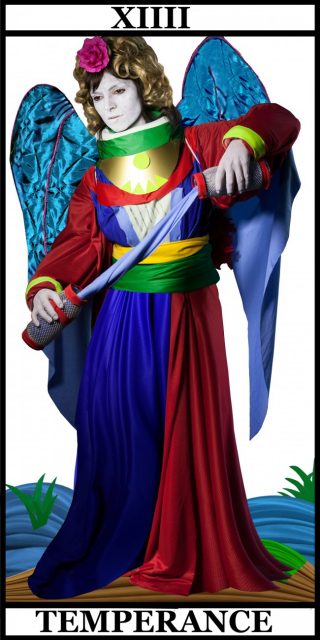
Œ: Textiles are a shell of things. In your work they replace objects and come close to some abstract sculptures.
Julie Bourgeois: The fabric for me is colors falling and draped. I have just explained how I believe that we constructed our games. At that very moment, something absolutely concrete and anchored in the present was going on. I think a kind of distortion can happen and it determines that surreal photograph and takes on a very realistic appearance—too realistic to serve the strange and magical aspects that it actually contains. Our sculptures, or better tableaux vivants, that took place in the studio, were almost always so intense, happening there in front of us. Many times we were surprise and fascinated by them. It was not only a matter of textiles; it was an ensemble, a spirit of now. Also the fact that we repeated these sessions regularly for two years was important.
Œ: In which way did you access the symbolic dimension of the cards through performance?
Vivian Druga.: The performative element was important as it enabled the real character to dive into the mythic one. Time is therefore quite important. When the next performer was chosen he /she would have a couple of days to one week to reflect on his interpretation and the relation between him/her and the one to be interpreted. When the actual performance took place, it would be captured in a photograph. All elements were created on the spot and following the performance tradition – the outcome would stay unknown.
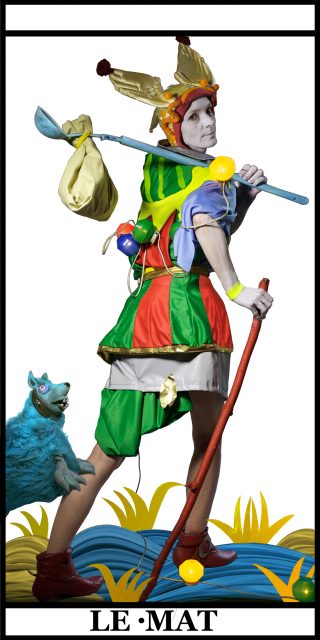
Œ: How did the sliding between hyperreal space and abstract space happen?
Vivian Druga: This fluctuation between real and hyperreal and abstract references the threefold simulation-simulacra order of the world we are living in, which J. Baudrillard wrote about. What is real, what is a copy of the real and a copy of a copy of the real? The 22+1 series is belonging actually to the third order because there was performance with real protagonists and the performance was captured in a photograph that is a reflection of the real, but in a mediological sense. I am using this term, since for Andrei Ujica, mediology designates the fact that the reality of the real is already a mediated one. In this sense the image is not real, but a transformation of the real. The digital manipulation of the photograph places the image on an abstract level so it distances it from reality, referencing the woodblock print, but gaining a new life of its own and becomes in a way real and alive again in the kinetic installation due to the motion it has acquired.
Œ: The entire set in these images is made by folds: fabric to reproduce itself infinitely. Does fabric create space?
Julie Bourgeois: The fabric is not infinite. There is an end, a finitude. It is a few meters long. But the game, as a reading, is so infinite. Realizing a drape looking at a Tarot picture, implies respecting the body of the model and working in the order of his/her body. In this process of freezing we have used only a few pins. We were being careful not to move too much, not to disturb the folds and other times needed to re-drape, if the model needed to move. Draping also determines the way in which the fabric catches the light, absorbs light and makes the color more intense, which I think has strengthened the depth of our ephemeral sculptures. Part of our works was also the acceptance of the accident and the chance. And the very presence of
the person.
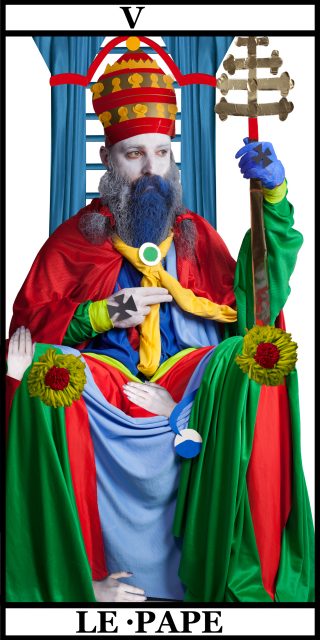
Œ: Textiles have also a capacity to evoke haptic sensations, smells, feelings. How did you work with this dimension in here?
Julie Bourgeois: At the end of the work, our fabrics were increasingly tattered, more dirty. After each shooting in Viviana’s studio, it resembled a battlefield or a nursery.
Œ: How do your cards reflect back on the classic Marseille Tarot?
Viviana Druga: Vast eras and auras are being bridged in our ’22+1′ series of art cards. The classic Tarot du Marseille is reanimated. In a way, the flesh and the bones of the real characters are adding soul to them. Archetypal symbolism is revived and reinterpreted in contemporary, razor-sharp photo collages, printed and installed as a life-sized game. The relevance of the psychological and transcendental dimensions of the photos, which can be accessed selectively in turn by each viewer during the exhibition, is closely linked to the relativity of the game itself.
